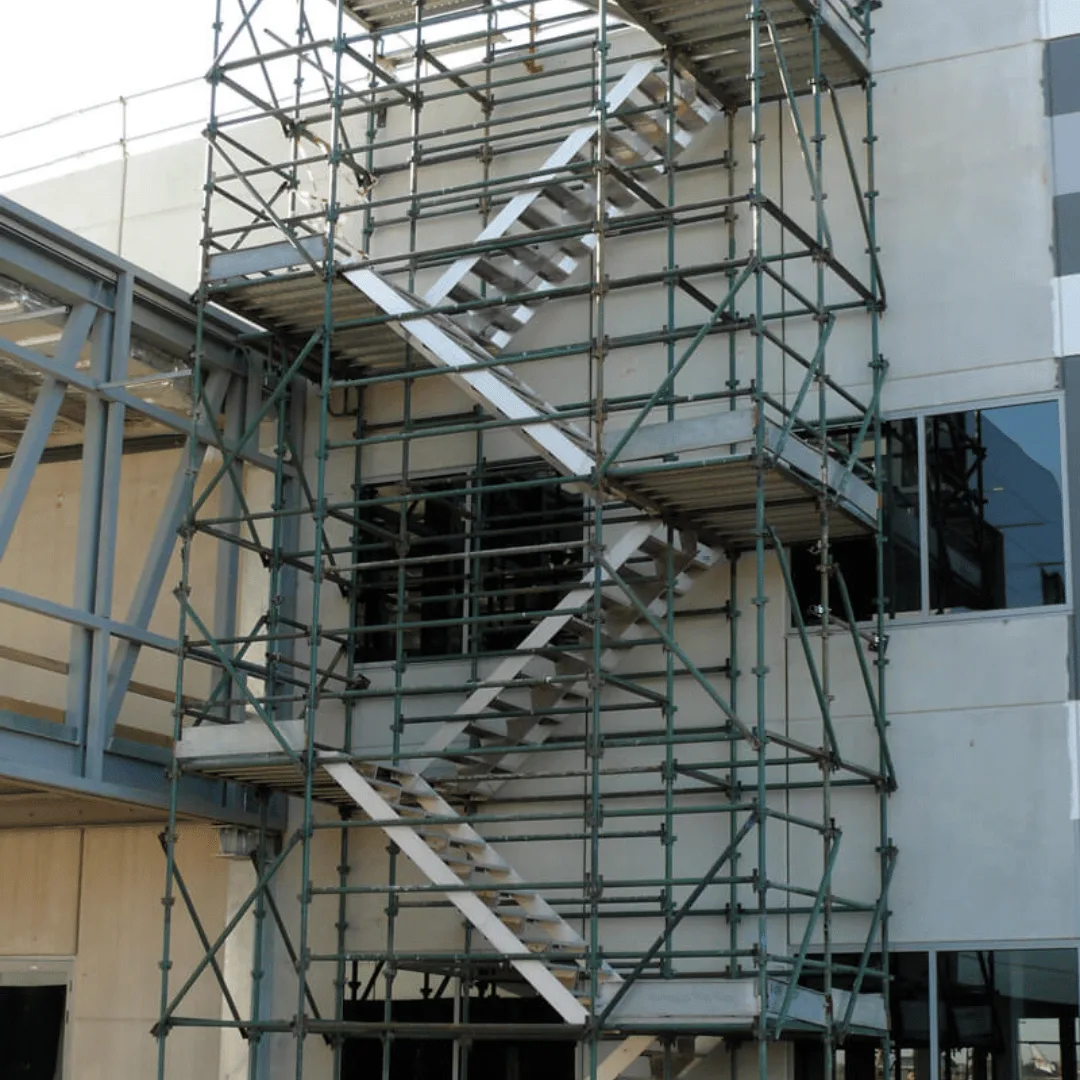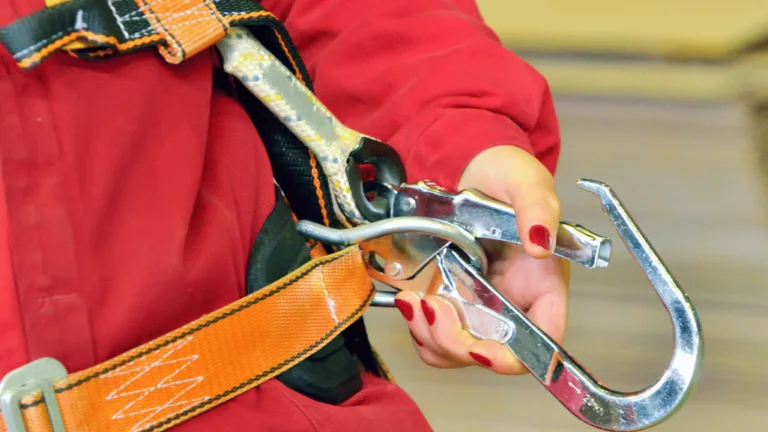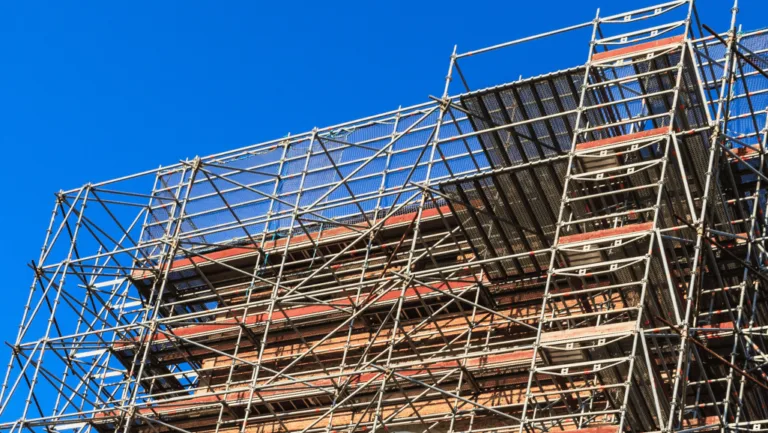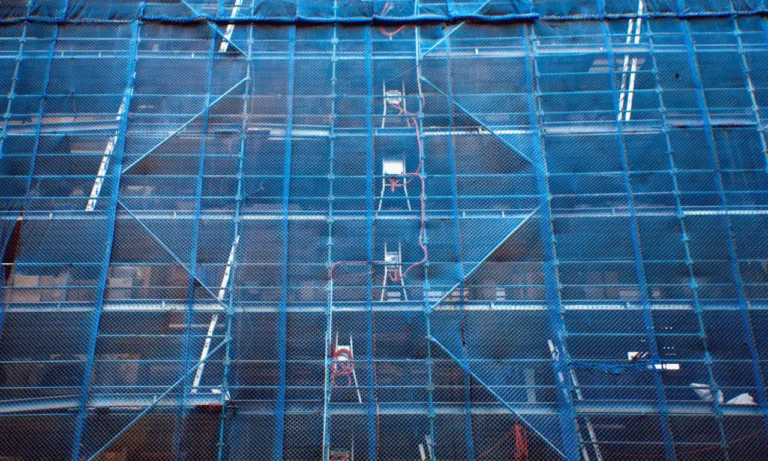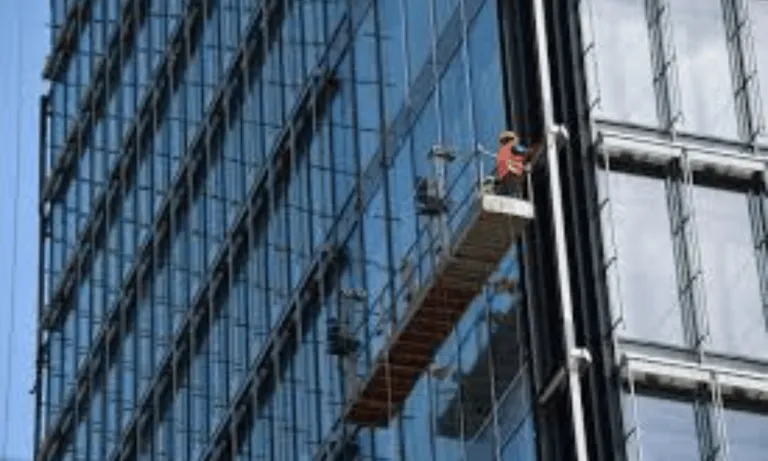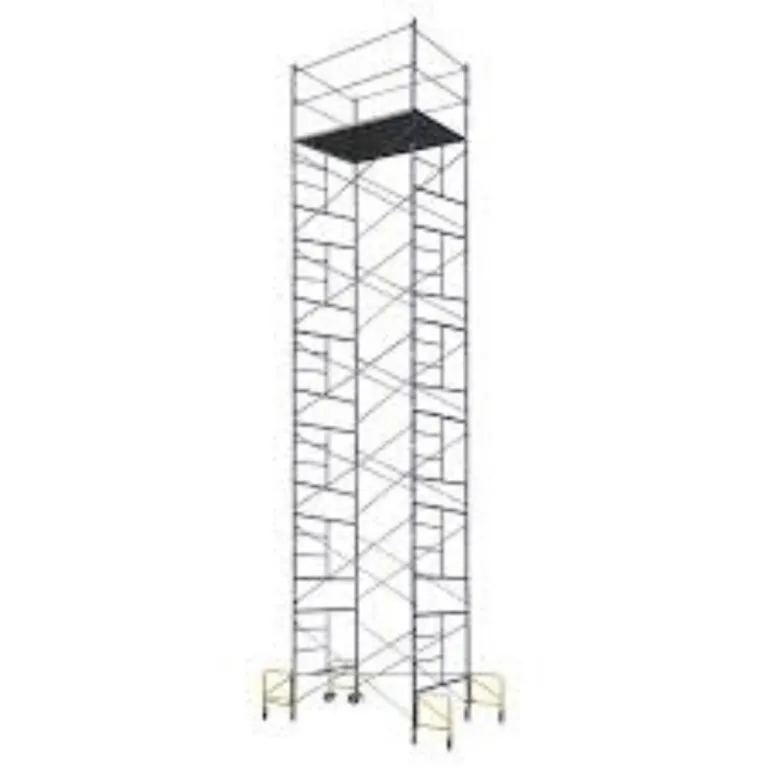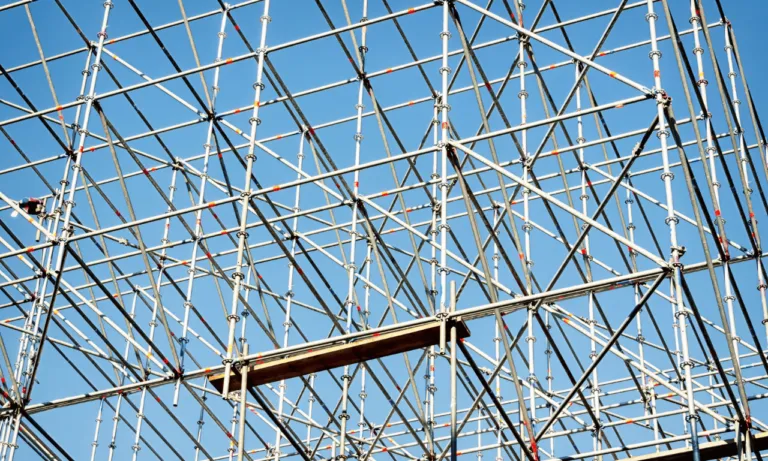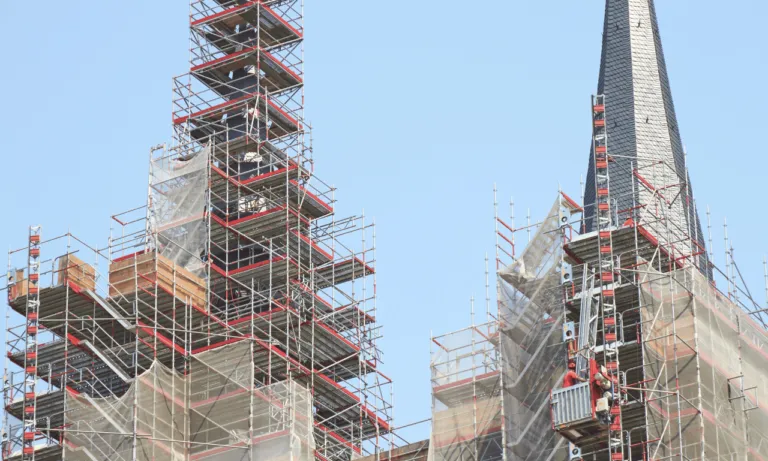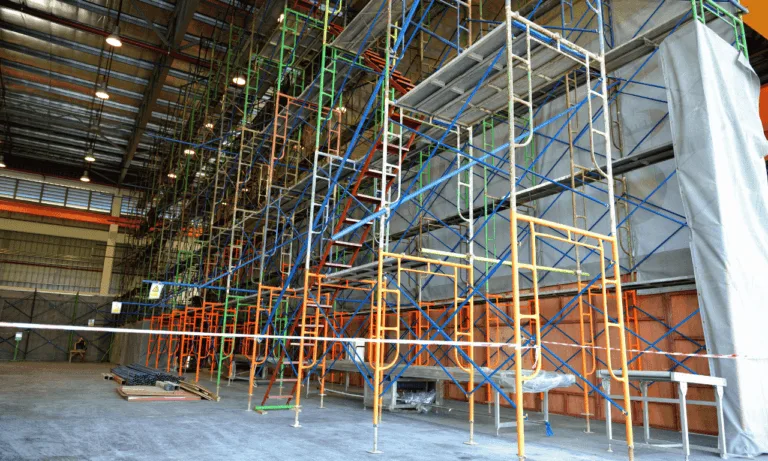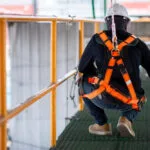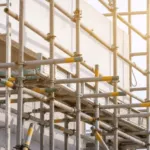Phone:
(+65)8319-0742
Staircase tower scaffolding provides a safe and efficient solution for accessing elevated work areas in construction and industrial settings. Whether it’s platform access, temporary work platforms, or industrial scaffolding, stair towers offer a reliable and versatile option for reaching heights and depths with ease. With the flexibility of adjustable scaffolding systems and scaffold tower rental, they can be tailored to meet specific project requirements.
Using stair tower scaffolding not only ensures the safety of workers but also enhances productivity by providing a stable and secure platform to work from. From complete façade cladding and renovation work to maintenance and repair tasks in industrial plants, stair towers are invaluable tools that enable workers to carry out their jobs effectively.
Key Takeaways:
- Staircase tower scaffolding offers safe and efficient access to elevated work areas.
- Platform stairs and construction stair towers provide ergonomic alternatives to ladders for enhanced safety.
- Stair towers are customizable and adjustable to meet specific project requirements.
- Renting stair tower scaffolding provides a flexible solution for temporary projects.
- Following safety guidelines is essential to ensure the secure use of stair tower scaffolding.
Platform Stairs for Scaffolding
When it comes to accessing elevated work areas, scaffold platform stairs offer a more ergonomic alternative to traditional scaffold ladders. These specialized stairs are integrated into the scaffolding system with an integrated scaffolding bay in front of them, providing a safer and more efficient solution for workers.
One of the key advantages of scaffold platform stairs is the unrestricted utilization width they offer. Unlike ladders, which require workers to climb up and down vertically, platform stairs allow for easy movement and material transport. This makes them an excellent choice for construction projects where access to the work area needs to be as simple and convenient as possible.
Scaffold platform stairs are designed to prioritize safety, with features such as non-slip surfaces and continuous handrails for secure climbing and descending. These stairs provide workers with a stable and ergonomic platform to move between scaffold levels, reducing the risk of accidents and injuries.
Take a look at the image below to see an illustration of scaffold platform stairs in action:
Platform stairs are versatile and can be used in a variety of construction projects. Whether you’re working on a small renovation or a large-scale construction site, these stairs provide a safe and efficient solution for accessing elevated work areas.
In summary, scaffold platform stairs are an ergonomic alternative to scaffold ladders, offering safe climbing, unrestricted utilization width, and an integrated scaffolding bay. They are an essential component of any scaffolding system and contribute to the overall safety and efficiency of construction projects.
Construction Stair Towers
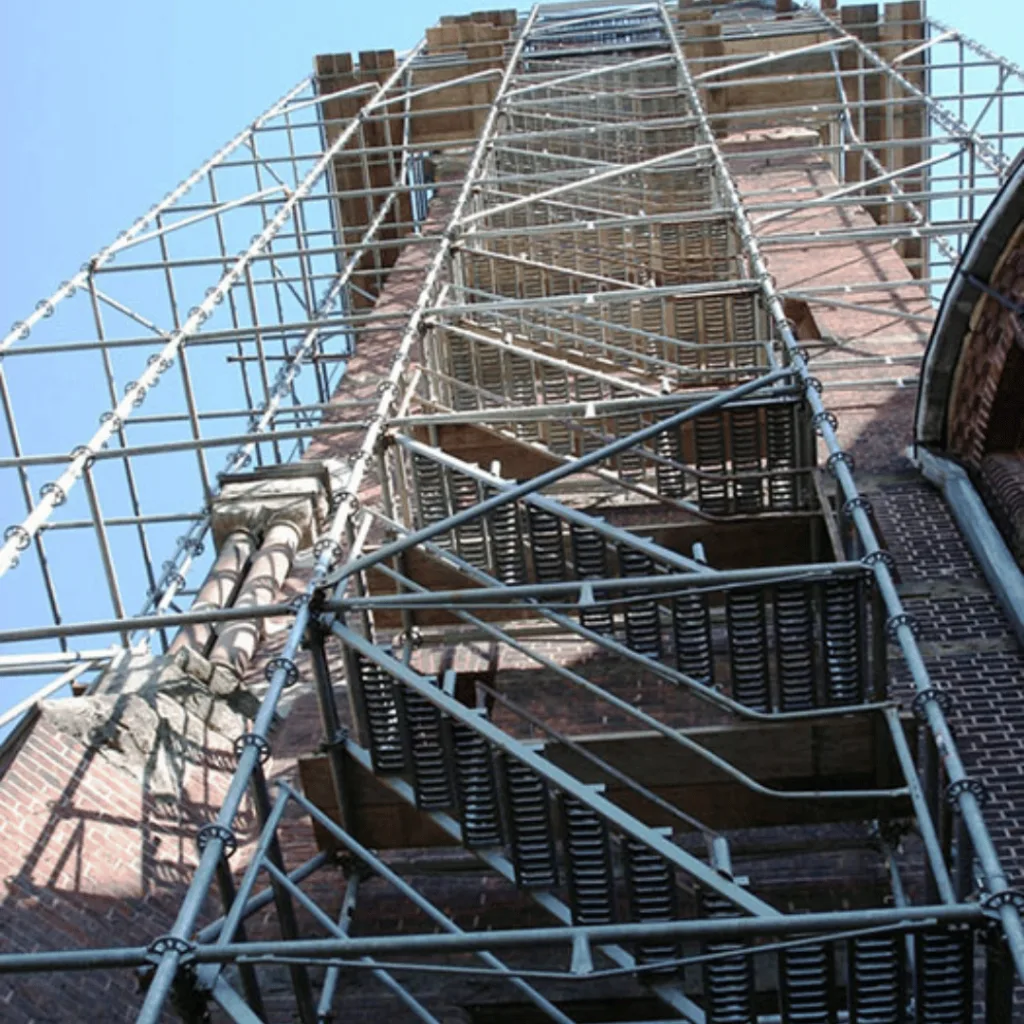
Construction stair towers are an essential component in the realm of scaffold construction, providing enhanced functionality for material transport and ensuring scaffold levels remain free for work. These versatile structures are designed with a load capacity of 2 kN per m2, making them suitable for heavy-duty applications. Utilizing a sturdy frame construction made of modular scaffolding material, construction stair towers offer durability and stability for safe and efficient vertical access.
One of the primary advantages of construction stair towers is their ability to facilitate seamless material transport on the scaffold. With a dedicated stair tower, workers can easily convey large quantities of materials to different levels of the construction site, improving productivity and reducing labor-intensive efforts.
Moreover, construction stair towers allow for unobstructed scaffold levels to be utilized for work, providing ample space and access for construction personnel to carry out tasks. This ensures that workflow is uninterrupted and maximizes the efficiency of the construction process.
Construction stair towers can be further tailored to suit specific project requirements. They can be extended or customized with special components, such as guardrails or additional access points, to enhance safety and convenience.
When it comes to load-bearing capabilities, construction stair towers are designed to meet load class 3 standards, making them reliable and robust structures for demanding construction projects. The load class 3 designation ensures that these stair towers can handle the weight of heavy equipment, tools, and materials commonly used in construction environments.
Advantages of Construction Stair Towers:
- Efficient material transport on the scaffold
- Unobstructed scaffold levels for uninterrupted work
- Customizable with special components for enhanced functionality
- Durable frame construction made of modular scaffolding material
- Adheres to load class 3 standards for heavy-duty applications
Construction stair towers offer a reliable and efficient solution for managing material transport and scaffold utilization on construction sites. With their adaptable nature and load-bearing capabilities, these structures provide a solid foundation for productive and safe construction operations.
| Advantages of Construction Stair Towers | Details |
|---|---|
| Efficient material transport | Allows for seamless conveyance of materials on the scaffold |
| Unobstructed scaffold levels | Ensures scaffold levels remain free for work, maximizing productivity |
| Customizable | Can be extended or customized with special components as needed |
| Durable frame construction | Made of modular scaffolding material for long-lasting performance |
| Load class 3 compliance | Designed to handle heavy loads commonly used in construction |
Public Access and Emergency Stair Towers
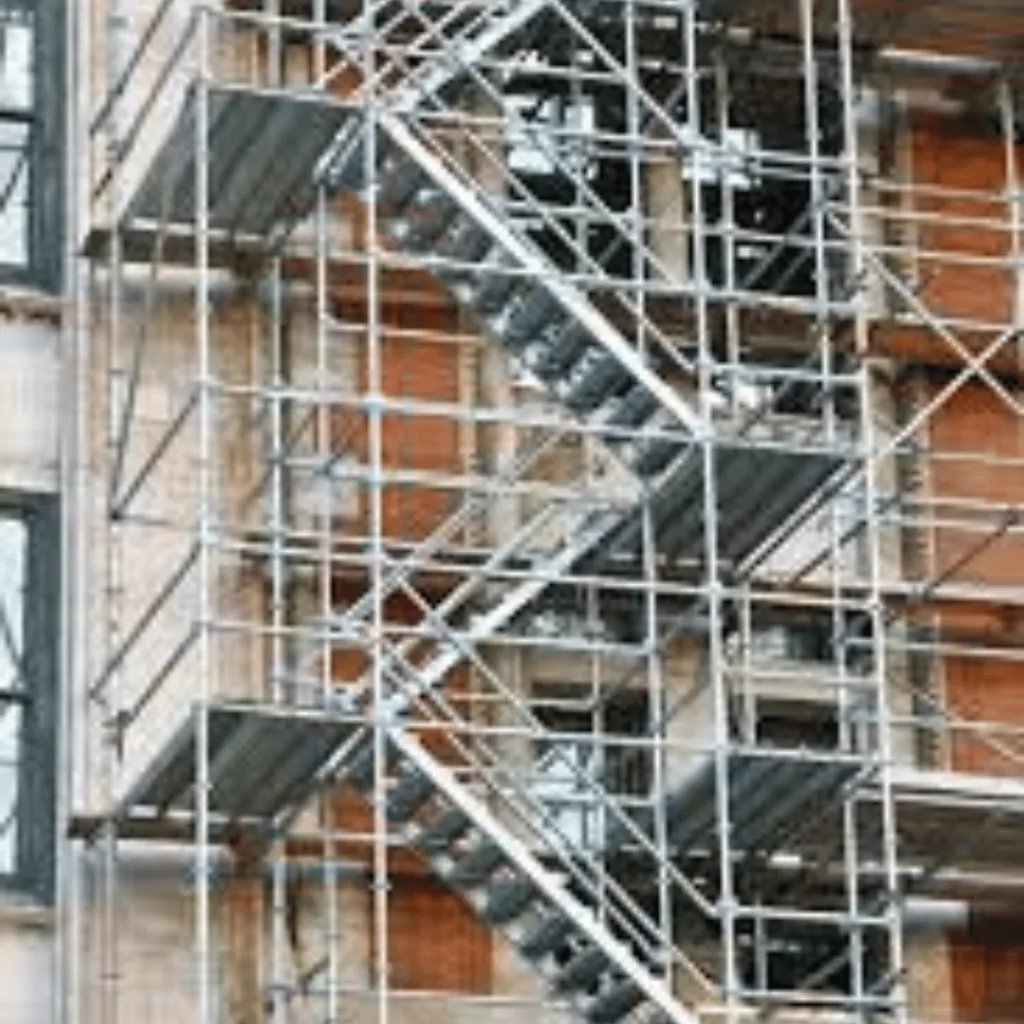
Public access stair towers and emergency stair towers play crucial roles in providing safe and efficient access in different environments. They serve distinct purposes, catering to specific needs in various scenarios.
Public Access Stair Towers
In situations where large numbers of people need access, public access stair towers are the ideal solution. These stair towers are commonly used in bridging solutions during roadworks, train stations, and at large public gatherings, including concerts and trade fairs. Their robust construction ensures the safe movement of individuals across different levels, providing a sturdy and reliable access point.
Public access stair towers must adhere to specific requirements to ensure the safety of those using them. These requirements include a sufficient load capacity to handle the weight of a large number of people simultaneously. Moreover, safety features such as non-slip surfaces, childproof railings, and continuous handrails are crucial to prevent accidents and create a secure environment for users.
Emergency Stair Towers
In public areas where emergency situations may arise, the presence of emergency stair towers is vital. These stair towers serve as escape routes and provide emergency access to and from elevated areas. They are designed to facilitate the swift movement of people in times of panic or emergency, ensuring a safe and efficient evacuation process.
Emergency stair towers are subject to strict regulations to ensure their reliability during critical situations. Besides having a suitable load capacity, emergency stair towers must feature non-slip surfaces to prevent slips and falls. Additionally, continuous handrails are necessary for individuals to maintain balance and stability while navigating the stairs.
Overall, both public access stair towers and emergency stair towers are essential components in ensuring the safety and well-being of individuals in different environments. Whether it’s providing access to large public gatherings or enabling emergency escape routes, these stair towers play a crucial role in maintaining security and facilitating efficient movement.
| Features | Public Access Stair Towers | Emergency Stair Towers |
|---|---|---|
| Load Capacity | Designed to handle a large number of people simultaneously | Capable of accommodating swift and safe evacuation |
| Safety Features | Non-slip surfaces, childproof railings, continuous handrails | Non-slip surfaces, continuous handrails |
| Application | Bridging solutions, train stations, large public gatherings | Public areas, facilitating emergency escape |
Benefits of Stair Tower Scaffolding

Stair tower scaffolding offers numerous benefits that make it an ideal choice for accessing elevated work areas. With its safe and efficient design, workers can access different levels with ease and confidence. Let’s explore some of the key advantages of using stair tower scaffolding:
1. Safe and Efficient Access
Stair tower scaffolding provides a secure and reliable means of accessing elevated work areas. Unlike traditional ladders, stair towers offer a stable and sturdy platform for workers to climb up and down. The inclusion of handrails and non-slip surfaces further enhances safety, minimizing the risk of accidents and injuries.
2. Increased Mobility
With stair tower scaffolding, workers can move freely and easily between different levels of the scaffolding structure. The platform stairs or construction stair towers allow convenient access to various work areas without the need for constant ascent and descent. This increased mobility not only saves time but also improves overall productivity.
3. Faster Material Transport
Stair tower scaffolding enables faster and more efficient material transport on the scaffold. Workers can easily carry tools, equipment, and materials up and down the stairs, eliminating the need for time-consuming methods such as rope and pulley systems. This streamlined process saves valuable time and effort, allowing for smoother workflow and project completion.
4. Undisturbed Work Areas
One of the key benefits of stair tower scaffolding is that it ensures undisturbed work areas on each scaffold level. With separate stair access points, workers can enter and exit the scaffolding without disrupting ongoing work. This seamless flow maximizes productivity by minimizing interruptions and maintaining focused, uninterrupted work environments.
In summary, stair tower scaffolding provides safe and efficient access to elevated work areas, enhances mobility, facilitates faster material transport, and ensures undisturbed work areas. These benefits make it an invaluable tool for construction projects, renovation work, and maintenance and repair tasks.
| Benefits | Description |
|---|---|
| Safe and Efficient Access | Provides secure and reliable access to elevated work areas |
| Increased Mobility | Allows workers to move freely and easily between different scaffold levels |
| Faster Material Transport | Enables efficient and streamlined transport of tools, equipment, and materials |
| Undisturbed Work Areas | Maintains uninterruptible work zones on each scaffold level |
Stair Tower Specifications
Stair towers are an essential component of scaffolding systems, providing safe and convenient access to elevated work areas. These towers are available in various designs, including frame construction made of modular scaffolding material. The modular nature of the construction allows for flexibility and customization to meet different project requirements.
One key aspect of stair tower specifications is the load class. Stair towers are classified based on their load-bearing capacity, and load class 3 is commonly used in construction projects. This load class ensures that the stair tower can withstand an evenly distributed surface load of 2 kN per m2, providing stability and safety for workers.
The frame construction of stair towers plays a vital role in their strength and durability. The use of high-quality materials and precise engineering allows for reliable performance and longevity. Stair towers can be extended to reach greater heights or customized with special components to adapt to specific project needs.
In summary, the specifications of stair towers include load class, surface load capacity, even load distribution, frame construction, and the option for special components. These features ensure the safe and efficient use of stair towers in various construction applications.
Stair Tower Specifications at a Glance:
| Key Specifications | Details |
|---|---|
| Load Class | Class 3 |
| Surface Load Capacity | 2 kN per m2 |
| Load Distribution | Evenly distributed |
| Frame Construction | Modular scaffolding material |
| Special Components | Available for customization |
Use Cases for Stair Tower Scaffolding
Stair towers are versatile and essential tools in various industries, offering reliable access to workplaces at both height and depth. Let’s explore some of the common use cases for stair tower scaffolding:
1. Façade Cladding
Stair towers are frequently used during complete façade cladding projects. They provide safe and sturdy platforms for workers to access and work on the exterior of buildings. Whether it’s installing new cladding materials, conducting repairs, or performing regular maintenance, stair towers offer a secure solution.
2. Renovation Work
When it comes to renovating roofs or other elevated areas, stair tower scaffolding proves invaluable. It enables workers to navigate construction sites efficiently and carry out various renovation tasks effectively. By providing easy access to different levels, stair towers streamline the renovation process.
3. Maintenance and Repair Work in Industrial Plants
In industrial plants, where maintenance and repair work is often required at elevated locations, stair towers offer a safe means of access. They allow workers to reach machinery, equipment, and structures, ensuring efficient maintenance and repair operations. Stair towers are designed to handle the demands of heavy industrial use, making them a reliable choice for such settings.
4. Excavation Pits
Stair towers are also commonly used to access excavation pits. These structures provide a secure way for workers to go in and out of deep excavations. Whether it’s for construction, inspection, or maintenance purposes, stair tower scaffolding ensures the safety and efficiency of the work being carried out.
These are just a few examples of the many applications of stair tower scaffolding. From façade cladding to maintenance and repair work, these versatile structures play a crucial role in numerous industries.
Image: Stair tower scaffolding in use, providing reliable access to elevated work areas.
Renting Stair Tower Scaffolding
When it comes to temporary projects that require accessing elevated work areas, renting stair tower scaffolding is a cost-effective solution. Rental companies offer adjustable scaffolding systems that can be tailored to meet specific project requirements, including height and load capacity. By opting for scaffold tower rental, businesses and individuals can avoid the need for long-term investment and enjoy the flexibility of adapting the scaffolding to changing project needs.
Temporary work platforms provided through scaffold tower rental not only provide a safe and efficient solution for working at heights but also offer increased mobility on construction sites. The adjustable scaffolding systems allow workers to access different levels easily while ensuring optimal stability and support. With the versatility of adjustable scaffolding systems, projects of varying sizes and complexities can be efficiently completed.
Having access to temporary work platforms is particularly beneficial for projects with changing requirements and unpredictable timelines. Renting stair tower scaffolding allows for seamless adaptability, making it easier to optimize efficiency without committing to a long-term scaffolding investment.
If you’re in need of adjustable scaffolding systems for your next project, consider renting stair tower scaffolding from reliable and reputable rental companies. By doing so, you’ll have access to top-quality equipment that meets safety regulations and industry standards, without the long-term financial burden of purchasing and maintaining your own scaffolding.
Benefits of Renting Stair Tower Scaffolding:
- Cost-effective solution for temporary projects
- Adjustable scaffolding systems tailored to specific project requirements
- Increased mobility and accessibility on construction sites
- Flexibility to adapt to changing project needs
- Access to top-quality equipment without long-term investment
Whether you’re renovating a building, performing maintenance and repair work, or working on a temporary construction project, renting stair tower scaffolding provides the temporary work platforms you need to complete your project safely and efficiently. Choose a trusted rental company that offers adjustable scaffolding systems to ensure you have the right equipment for your specific requirements.
Safety Guidelines for Stair Tower Scaffolding
Ensuring safety is of utmost importance when working with stair tower scaffolding. By following these safety guidelines, you can minimize the risk of accidents and injuries:
Safe Climbing and Descending
When ascending or descending the stair tower, be sure to:
- Use the handrails for support and balance.
- Face the stairs and maintain a firm grip on the handrails.
- Take one step at a time, avoiding rushing or skipping steps.
- Keep the stair tower clear of debris or obstacles that may cause slips or falls.
Proper Maintenance
Maintaining the structural integrity and stability of the stair tower is crucial. Here are some maintenance tips:
- Regularly inspect the scaffolding for any signs of damage or wear-and-tear.
- Ensure that all components, including stairs, handrails, and platforms, are secure and in good condition.
- Follow the manufacturer’s recommendations for maintenance and cleaning.
- Immediately address any issues or concerns identified during inspections.
Fall Protection
Fall protection measures should be implemented to prevent falls from the stair tower:
- Install guardrails on all open sides of the stair tower to provide a physical barrier.
- Wear personal protective equipment (PPE) such as a harness and safety helmet when working at height.
- Ensure that the access points to the stair tower are properly secured and restricted to authorized personnel.
- Train workers on the proper use of fall protection equipment and safe work practices.
Stability
Ensuring the stability of the stair tower is essential for safe use:
- Ensure that the base of the stair tower is securely placed on a level and stable surface.
- Avoid overloading the scaffold beyond its specified weight capacity.
- Do not move or reposition the stair tower while workers are on it.
By prioritizing safety and adhering to these guidelines, you can create a secure working environment when using stair tower scaffolding.
| Guidelines | Key Points |
|---|---|
| Safe Climbing and Descending | Use handrails, face the stairs, and maintain a firm grip. |
| Proper Maintenance | Regularly inspect and address any signs of damage or wear-and-tear. |
| Fall Protection | Install guardrails, wear PPE, restrict access, and provide training. |
| Stability | Ensure a secure base, avoid overloading, and do not move while workers are on the tower. |
Conclusion
Staircase tower scaffolding provides a secure and efficient solution for accessing elevated work areas. With its platform stairs and construction stair towers, it offers ergonomic alternatives to ladders, enhancing safety and allowing for easy material transport. Whether it’s construction projects, industrial settings, or public spaces, stair tower scaffolding caters to specific needs in different environments.
Renting stair tower scaffolding further provides a flexible option for temporary projects, eliminating the need for long-term investment. By adhering to safety guidelines such as safe climbing and descent, proper maintenance, and fall protection measures, workers can confidently and safely utilize stair tower scaffolding in various construction and industrial settings.
With staircase tower scaffolding, workers can access elevated work areas with peace of mind, knowing that they have a secure and efficient solution at their disposal. The ergonomic design of the platform stairs and construction stair towers not only enhances safety but also improves productivity. Renting stair tower scaffolding allows for adaptability and cost-effectiveness, making it an ideal choice for temporary projects. By following safety guidelines, workers can ensure a secure working environment and confidently carry out their tasks in construction and industrial settings.
FAQ
What is staircase tower scaffolding?
Staircase tower scaffolding is a safe and efficient solution for accessing elevated work areas. It is commonly used in construction, renovation, and maintenance projects.
When is a stair tower necessary?
A stair tower becomes necessary for safety reasons when working at a height of 10 meters or above. Ladders are not recommended for these heights.
What are the different types of stair towers?
There are platform stairs, construction stair towers, public access stair towers, and emergency stair towers. Each type has its own benefits and use cases.
How are platform stairs different from scaffold ladders?
Platform stairs are a more ergonomic alternative to scaffold ladders. They provide a safer climbing experience and allow for easier material transport. They are integrated into the scaffolding with a scaffolding bay in front of them.
What are construction stair towers used for?
Construction stair towers are used when a large amount of material needs to be transported on the scaffold or when all scaffold levels need to remain free for work. They have a load capacity of 2 kN per m2 and can be extended or customized.
What are public access stair towers used for?
Public access stair towers are used in situations where large numbers of people need access, such as roadworks, train stations, concerts, or trade fairs. They comply with specific requirements for load capacity and safety features.
What are the benefits of stair tower scaffolding?
Stair tower scaffolding provides safe and efficient access to elevated work areas. It allows for easier movement between levels, faster material transport, and undisturbed work areas on each scaffold level.
What are the specifications of stair towers?
Stair towers are typically made of a frame construction using modular scaffolding material. They have load classifications, commonly load class 3, with a surface load of 2 kN per m2. They can be extended or customized with special components.
What are the use cases for stair tower scaffolding?
Stair tower scaffolding is used for various applications, such as complete façade cladding, renovation work, maintenance and repair work in industrial plants, and accessing excavation pits.
Can stair tower scaffolding be rented?
Yes, stair tower scaffolding can be rented for temporary projects. Rental companies offer adjustable scaffolding systems that can be tailored to specific project requirements.
How can I ensure safety when using stair tower scaffolding?
To ensure safety, it is important to follow safety guidelines, conduct regular maintenance and inspections, and implement fall protection measures such as guardrails and proper use of personal protective equipment.

